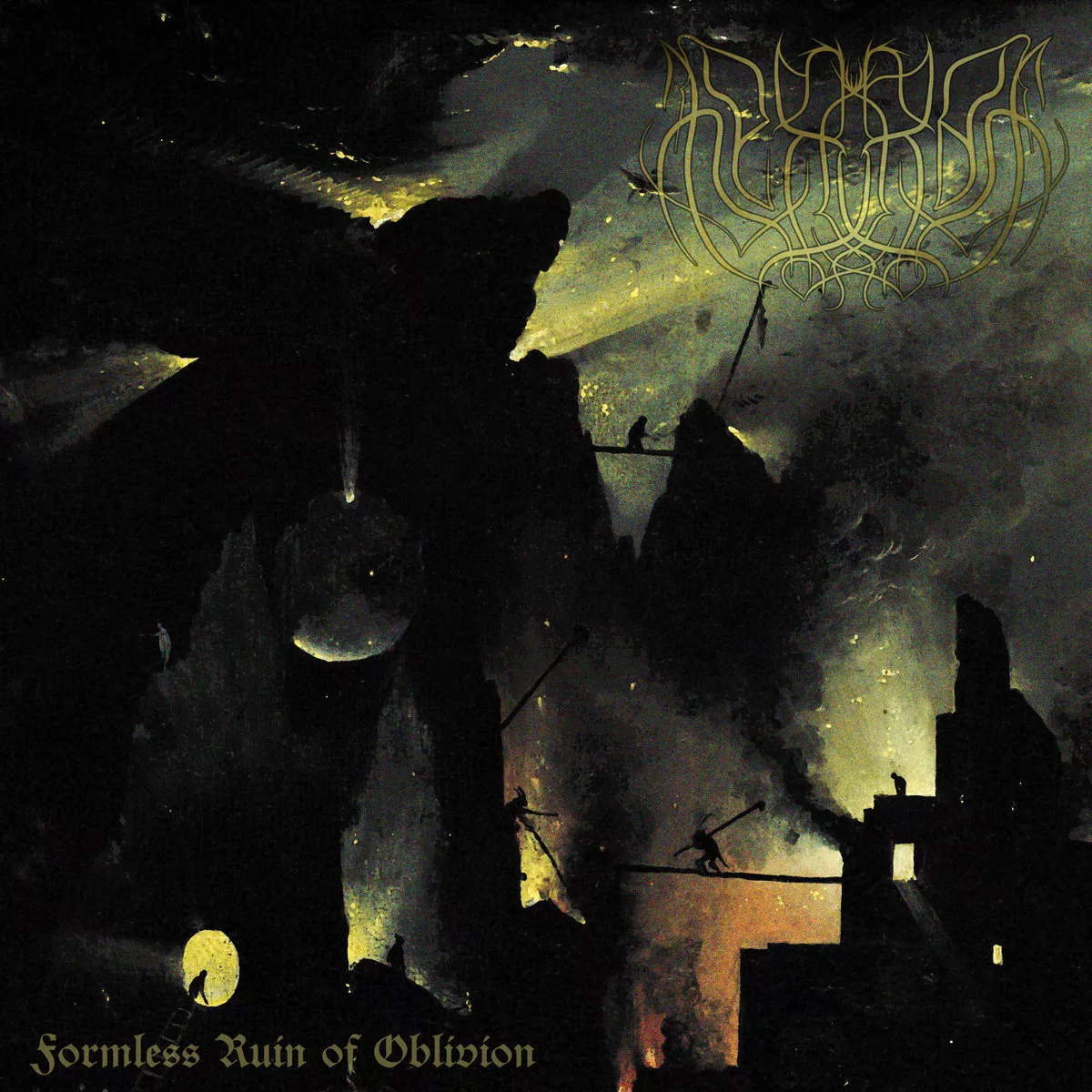Review: Hexrot – Formless Ruin Of Oblivion

“Formless Ruin of Oblivion”, the latest offering of Hexrots vison of extreme metal, is as a daring exercise in bizarre architecture: a debris of ideas piled one atop another, sometimes coherent, often disorienting. Avant-death, black, and thrash metal tropes used to blur boundaries rather than build bridges. That’s an interesting experiment, but the result is uneven, compelling in flashes but frustrating in execution.
The opening songs promise much and crash into existence with dissonant riffs, wild drums, and simmering synths, evoking both chaos and atmosphere. There are moments where the layering works: the electronics intrude just enough, the blackened vocals snap, the rhythms twist. But very quickly the density becomes a burden. The album’s tapestry of textures threatens to swallow its own intent, leaving listener fatigue rather than awe.
Hexrot’s strengths lie in imagination and ambition. The production gives breathing room amid the chaos; modular synths, harsh noise, twisted melodies all coexist in a space that sometimes feels alive. When “Consecrating Luminous Conflagration” builds toward its climactic thrash-inflected chaos, there is a sense of potential realized. But these high points are too sparse. Between them lie passages that sound meandering, where electronic interludes and ambient fleeting moments overstay their welcome.
The title track, spanning many minutes, tries to act as a capstone, but its length becomes a liability. What could have been a grand statement becomes a slog. “Ghostly Retrograde II”, for example, pushes atmospheric drift without enough directional purpose; moments aimed at transcendence dissolve into static and noise without satisfying tension or release. The ambitious structure, in which seven tracks flow continuously, sometimes turns into a blur rather than a journey.
Vocals are mixed well, varied in delivery, but often feel disconnected from the instrumental tumult. They clash with ambitious instrumentation rather than unify. Similarly, while the electronics promise modern artifice, they sometimes feel like decoration rather than integral architecture. The shift between death, black, thrash, ambient is often bold, but all too often lacks effective transitions. The listener is jerked between extremes rather than guided through them.
What holds the album back further is how its innovation sometimes feels accidental rather than intentional. There are many ideas: dissonant riffing, modular synth flourishes, shifting meter, noise. But too many tracks hang on the promise of what they might become, rather than delivering what they are. The experience becomes more about texture and less about emotional or thematic resonance. It is noise and artifice more than catharsis.
“Formless Ruin of Oblivion” is not without merit. It is willing, restless, full of surprises in its own rough way. For listeners who enjoy the jagged edges of avant-metal, who are drawn to albums that challenge rather than console, there is value here. But for many, the lack of discipline across its sprawling moments will prove distracting.